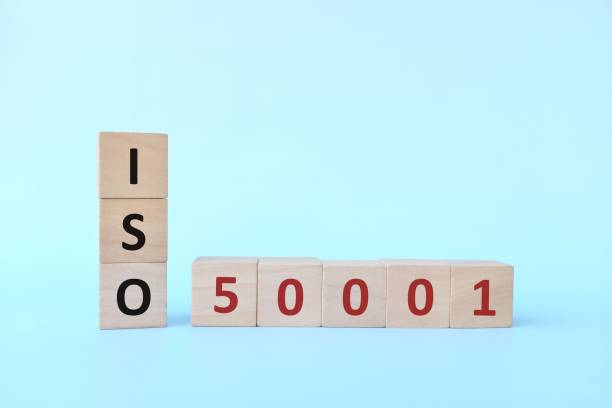If you’re in the commercial building or real estate business, chances are you’re always looking for ways to improve the efficiency of your operations. But here’s the thing—efficiency isn’t just about saving time or cutting costs. It’s about sustainability. And that’s where ISO 50001 certification comes in. Whether you’re managing a single building or overseeing an entire portfolio of properties, ISO 50001 is a game-changer.
So, why should you care about ISO 50001? Well, let me walk you through it.
What Exactly Is ISO 50001?
At its core, ISO 50001 is all about energy management. Specifically, it’s a global standard that helps businesses and organizations improve their energy performance, efficiency, and sustainability. It’s part of the broader ISO 50000 series, which is designed to help organizations reduce their energy consumption, lower their environmental footprint, and—let’s not forget—cut down on operational costs.
For commercial buildings and real estate developers, ISO 50001 is the roadmap for managing energy use in a way that’s not only smart but also future-proof. And with the growing emphasis on sustainability in the building industry, this certification can really set your business apart. But there’s more to it than just “saving the planet.” ISO 50001 is about strategic energy management that directly impacts your bottom line.
Why ISO 50001 Is a Must for Commercial Buildings and Real Estate
Now, you might be wondering, “Okay, but how does this affect me?” Great question. Whether you’re an energy manager in a single office building, the owner of a retail complex, or you manage a large real estate portfolio, ISO 50001 offers several distinct benefits. Let’s take a look at why this certification should be on your radar.
1. Energy Savings That Directly Impact Your Bottom Line
Here’s the thing: energy consumption is one of the largest costs for commercial buildings. But, and I’m sure you’ve noticed this, finding ways to cut those costs isn’t always straightforward. That’s where ISO 50001 comes in. It provides you with a structured approach to identify where energy is being wasted, and then helps you put strategies in place to improve energy efficiency.
By focusing on smarter energy management, you can expect noticeable reductions in utility costs, operational expenses, and even maintenance costs. Over time, those savings can add up in a big way. For instance, imagine shaving 10-20% off your annual energy costs—that’s real money you can reinvest in other aspects of your business.
2. Enhanced Sustainability and Environmental Impact
Let’s face it—sustainability is no longer just a buzzword. It’s a necessity. ISO 50001 can help you reduce your carbon footprint by optimizing energy use across your buildings. The certification focuses on continuous improvement, which means your building or portfolio will become more energy-efficient over time, lowering environmental impact while meeting regulatory requirements.
Plus, as sustainability becomes an increasing priority for both governments and consumers, being ISO 50001 certified gives you a competitive edge. It signals to tenants, investors, and stakeholders that you’re committed to green practices, which can help you attract eco-conscious clients, reduce vacancy rates, and even secure green building incentives.
The ISO 50001 Certification Process: What’s Involved?
Okay, now that we know why ISO 50001 is such a big deal, let’s talk about how you can actually earn that certification. The process might seem intimidating at first, but trust me—it’s not as complicated as it sounds.
1. Start with an Energy Review
The first step is to get a clear picture of your current energy usage. That means performing an energy review to identify areas where energy is being wasted and where improvements can be made. This could involve everything from assessing lighting systems, heating, and cooling systems, to reviewing the efficiency of appliances, machinery, and even the building’s insulation.
You might already have some data on energy use, but an energy audit can help dig deeper and identify inefficiencies that you didn’t know existed. This is where an expert might come in handy, so don’t hesitate to bring in professionals who can help you assess and document everything accurately.
2. Create an Energy Management Plan (EnMP)
With your EnPIs in place, you’ll need to create a detailed energy management plan (EnMP) that outlines your strategy for meeting your energy-saving goals. This plan should include specific actions, timelines, and the responsibilities of each team member involved in energy management.
You’ll also need to consider any changes in building operations, maintenance schedules, or tenant behaviour that might impact energy consumption. Remember, ISO 50001 is about creating a system for continuous improvement, so your EnMP should be adaptable and dynamic.
3. Implement Your Plan and Monitor Results
Here’s where the rubber meets the road: you start putting your energy-saving plan into action. Whether it’s installing energy-efficient lighting, upgrading HVAC systems, or optimizing insulation, the goal is to make tangible changes that improve energy performance.
But don’t just stop there—monitor everything. Regular reviews and audits are essential to track the success of your energy-saving efforts and ensure you’re meeting your EnPIs. This is also where real-time energy management software can be a game-changer, helping you keep tabs on consumption and make adjustments quickly.
4. Certification and Continuous Improvement
After implementing your plan, it’s time for the formal certification process. An accredited body will conduct an external audit to assess whether you meet ISO 50001 standards. If you pass, congratulations! You’ll be ISO 50001 certification. But remember, this is just the beginning.
ISO 50001 is all about continuous improvement, so you’ll need to regularly review your energy management system, make adjustments, and ensure that you’re always pushing for better results. Certification isn’t a one-time deal—it’s an ongoing commitment to sustainability and energy efficiency.
Wrapping It Up: The Future of Real Estate and Energy Management
ISO 50001 isn’t just about reducing your energy bills (though that’s a nice perk). It’s about creating a culture of sustainability that resonates with your tenants, your employees, and your clients. As energy efficiency and environmental responsibility continue to be top priorities in commercial real estate, ISO 50001 certification gives you the tools you need to stay competitive.
But more than that, it shows you’re committed to doing business responsibly and efficiently. So, if you’re ready to make your properties more sustainable, reduce costs, and improve your marketability, ISO 50001 is a step you don’t want to skip.
Ready to power up your energy strategy? The journey to ISO 50001 certification starts now.































